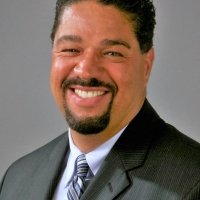Promoting Years of Sustainability: Responding to Megatrends
2015 is a major test for the international system. The Sustainable Development Goals are expected to be adopted in New York in September and expectations for the UN Climate Summit in Paris are higher than perhaps any other time. “It is a critical year,” said Alan Hecht, director for sustainable development for the U.S. Environmental Protection Agency, “but our challenge is years of sustainable development. How do we take actions today, how do we prepare for the future in such a way that we will achieve a more sustainable outcome?”
As soon as 2030, a projected world population of 8.3 billion people will need 35 percent more food, 40 percent more water, and 50 percent more energy, according to the United Nations. These megatrends “complicate global security, diplomatic efforts, and development policy,” said Roger-Mark De Souza, director of population, environmental security, and resilience at the Wilson Center. Experts gathered at the Wilson Center on Earth Day to discuss planetary megatrends and how to best respond to human-environmental challenges.
Meeting Competing Demands
In China, tensions over resources are already playing out as Beijing struggles to balance its need for growth in the food and energy sectors with a dwindling water supply, said Jennifer Turner, director of the Wilson Center’s China Environment Forum. Already 15 to 20 percent of the country’s available water is being used in coal production and energy consumption is expected to double by 2020. “This is not just a story of China,” she said, “we see this all around the world so China is a great model for us to think about what is going on.”
India has also ramped up coal production in order to meet exploding energy demand. Unregulated and damaging “rat-hole mining,” the subject of Wilson Center documentary Broken Landscape, has taken root in some regions. “They are on a trajectory to surpass China in terms of CO2 emissions,” said Turner, “so some of the stories we talk about with coal-water confrontations in China we will start maybe hearing in India.”
Modernizing water infrastructure in the U.S. will cost more than $1 trillion
The water-energy-food nexus reached a climax in India when overuse of electricity in the agricultural sector helped cause blackouts in 2012 that left 700 million people without power. Since water and electricity are free, farmers have an incentive to run irrigation pumps nonstop. As a result, the agriculture sector accounts for 19 percent of the country’s electricity use. Worse, one-third of all electricity is lost or stolen, said Turner.
Major infrastructure investment will be needed even in the richest countries. As California suffers through a historic drought, Hecht said modernizing water infrastructure in the United States will cost more than $1 trillion over the next 25 years. “The water infrastructure needs that have to be met, the cost of building it, and how were going to deal with this is another one of the major issues that will determine how we achieve and if we are able to achieve years of sustainable development,” he said.
A City-Based Solution?
Urbanization may offer solutions to 21st century resource issues, said Banning Garrett of Singularity University. Every week, 1.5 million new residents are added to urban areas, but such concentration can promote more efficient use of resources, he said. With denser cities, less land is needed for housing and it becomes easier to distribute goods and services to a large number of people, reducing transportation emissions and costs.
From investments in vertical farming to autonomous vehicles, “smart city” technologies are expected to create a multi-trillion-dollar market, said Garrett. Following in the footsteps of transportation innovations like bus rapid transit systems, the Innovation Center for Mobility and Societal Change is taking a city block of 6,000 people “off the grid” in Berlin. In collaboration with universities and auto and electric companies, they hope to explore the potential for electric car-sharing schemes based on GPS tracking, said Garrett.
These innovations and opportunities are likely to continue attracting talent and entrepreneurialism. “Cities are where growth is really driven,” said Garrett, “this is where people gather, this is where innovation takes place, this is where economic growth happens.”
“If you want states to succeed, you better work on the cities because they are going to drive economic development and be a source that hopefully spreads outward governance and effectiveness.”
Beyond Urban, Going Global
“Governments are having a hard time thinking about participating at the global market-scale level,” said Terry Yosie, president and CEO of the World Environment Center. But as awareness about the environmental and social impacts of business grows, many companies are feeling the pressure to make changes to how they work.
One increasingly popular initiative is end-to-end traceability, which tracks the movement of ingredients or components of a product through the production chain. Traceability empowers consumers to make decisions based on the origin and quality of products and the conditions under which they are made. Businesses also benefit as potential contaminants or problems can be detected sooner and with greater specificity in the supply chain, minimizing disruptions to commerce. “We need to start thinking about regulating entire value chains and not just specific source categories,” said Yosie.
Corporations are also facing public pressure around climate change. In order to maintain its reputation, the Walt Disney Company responded to concerns over its greenhouse gas emissions by imposing an internal carbon pricing program in 2013. Other corporate giants, such Microsoft and Shell, have adopted similar policies, even expressing support of greater regulation of greenhouse gasses worldwide.
“We’re going to have to increasingly think about policy embodying a systems approach rather than just a pollution control approach or a pollution prevention approach,” said Yosie, pointing out that only a few national governments have implemented carbon taxes.
“I think that we all have a role to play here as consumers, as analysts, as decision-makers,” he said. “I think we’re going to have to look for new kinds of ways to begin to develop more integrated tool sets.”
De Souza echoed that sentiment. “I think what you will hear coming out of the discussion is a need for a more intentional and consistent analysis on the ways in which these megatrends are likely to evolve, interact with one another, and influence the development landscape,” he said.
Event Resources:
Written by Carley Chavara, edited by Schuyler Null.
Photo Credit: Hong Kong sunset, courtesy of flickr user Mike Behnken.
Speakers

Vice President, Sustainable Markets, Pact

Hosted By

Environmental Change and Security Program
The Environmental Change and Security Program (ECSP) explores the connections between environmental change, health, and population dynamics and their links to conflict, human insecurity, and foreign policy. Read more


Brazil Institute
The Brazil Institute—the only country-specific policy institution focused on Brazil in Washington—aims to deepen understanding of Brazil’s complex landscape and strengthen relations between Brazilian and US institutions across all sectors. Read more
